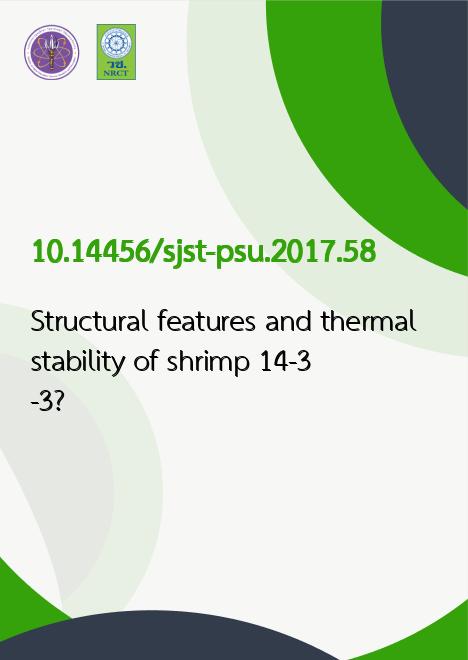
|
Structural features and thermal stability of shrimp 14-3-3? |
|---|---|
| รหัสดีโอไอ | |
| Creator | 1. Chutintorn Chauywong 2. Sasithorn Boonprakong 3. Amornrat Phongdara 4. Warapond Wanna |
| Title | Structural features and thermal stability of shrimp 14-3-3? |
| Publisher | Research and Development Office, Prince of Songkla University |
| Publication Year | 2560 |
| Journal Title | Songklanakarin Journal of Science and Technology (SJST) |
| Journal Vol. | 39 |
| Journal No. | 4 |
| Page no. | 531 |
| Keyword | alternative splicing,14-3-3 epsilon,?-sheet, genomic structure,protein stability |
| ISSN | 0125-3395 |
| Abstract | In our previous study, we reported that the nucleotide sequence of a 14-3-3? cDNA clone from Litopenaeus vannameiencodes two transcripts, designated as 14-3-3EL and 14-3-3ES. Based on the retained introns we observed in 14-3-3EL byalternative splicing, we aimed to investigate the genomic structure of this gene. The 14-3-3? gene, encoded by 2,311 bp ofDNA sequence, is interrupted by three introns of 48, 1,124 and 365 bp in size. In addition, using the SWISS-MODEL, thepredicted 3D model of 14-3-3EL has twelve ?-helices and two ?-sheets, whereas 14-3-3ES has only eleven helices in itstertiary structure. Additionally, we generated the 14-3-3EL and 14-3-3ES proteins and measured their thermal stabilities.The results demonstrated that the quantity of the 14-3-3EL protein decreased significantly at all temperatures tested.In contrast, the quantity of the 14-3-3ES protein remained unchanged, suggesting that 143-3-3EL is less stable than 14-3-3ES. |
